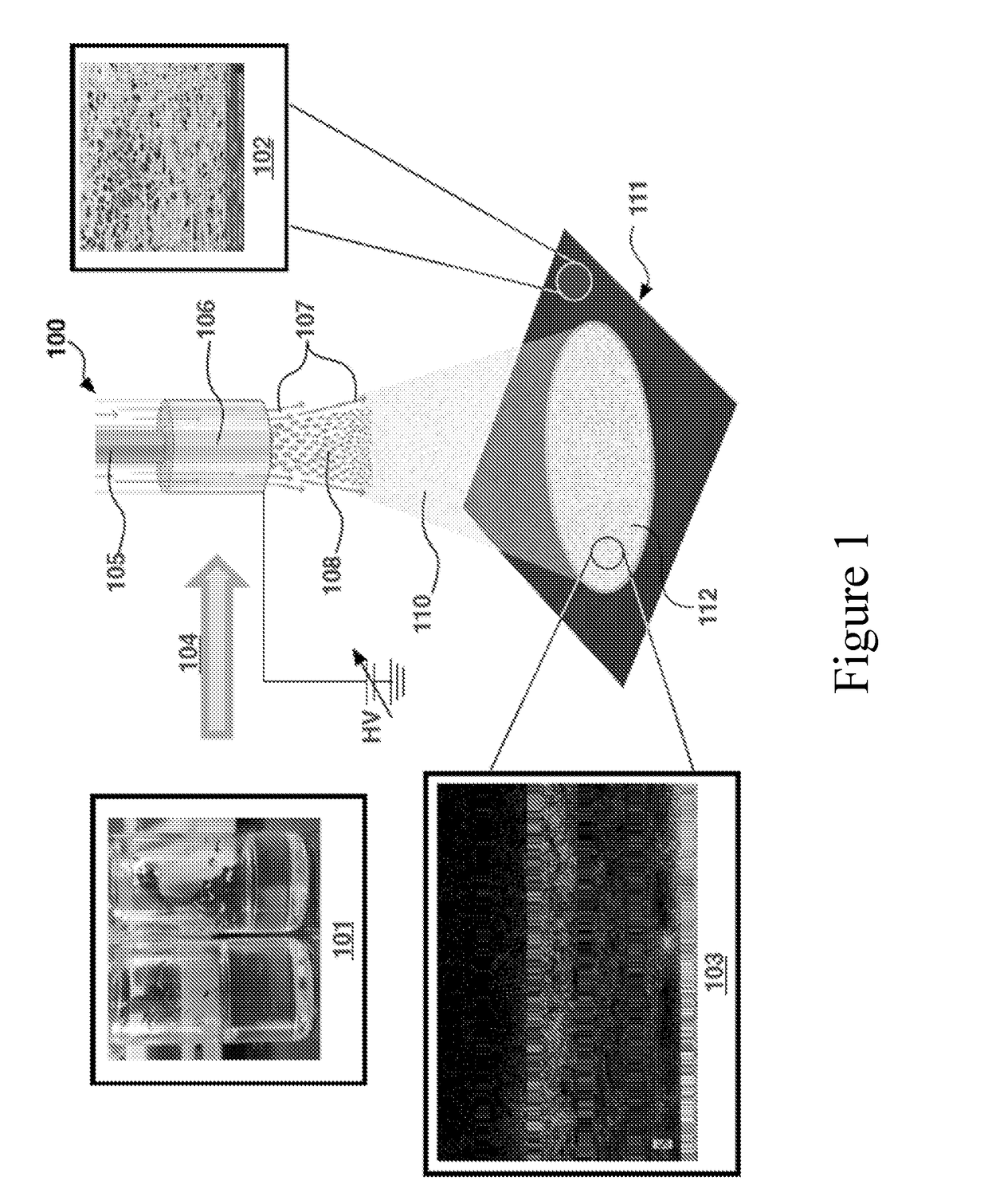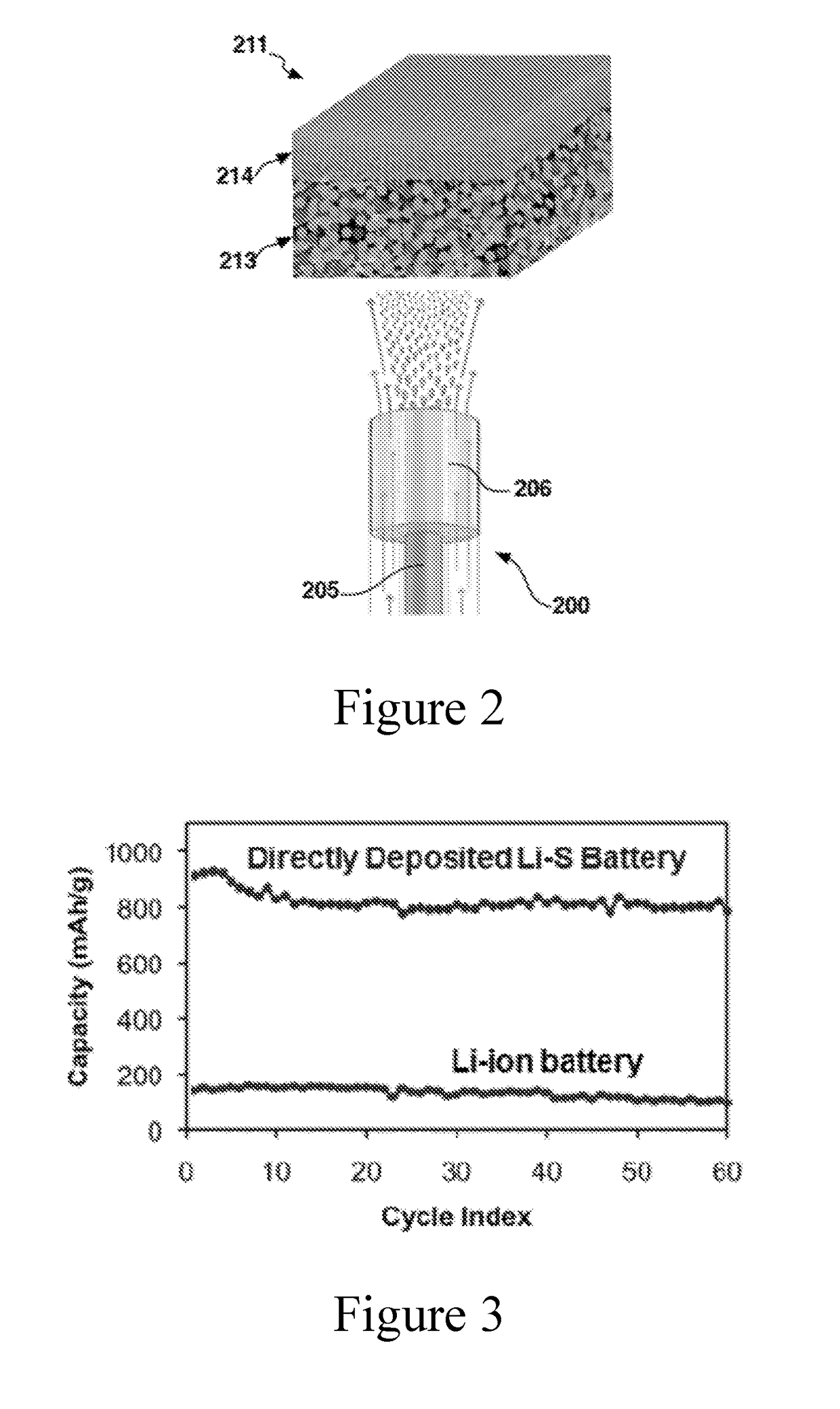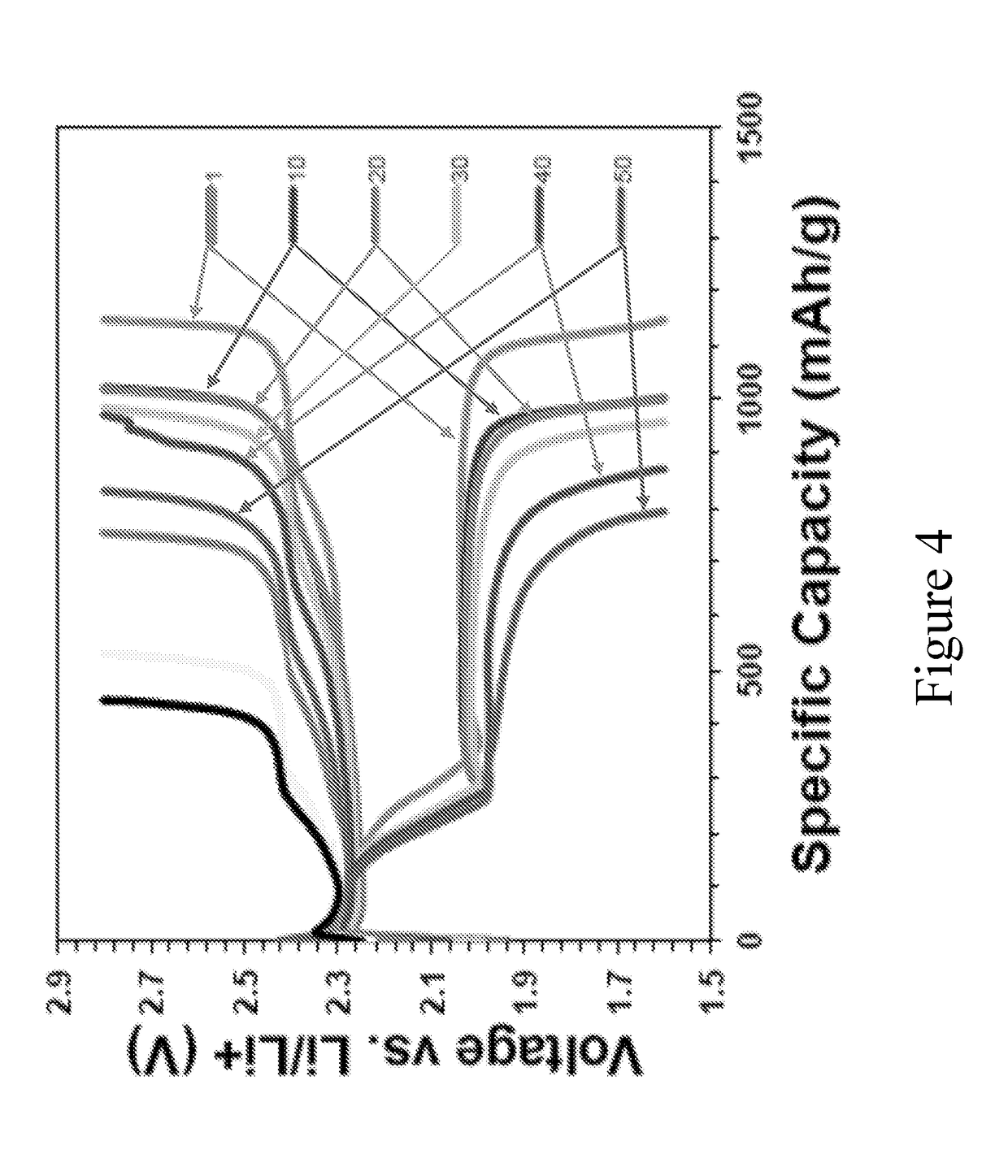Multi-domained sulfur electrodes, and manufacturing therefor
a sulfur electrode and multi-domain technology, applied in the field of sulfur electrodes, can solve the problems of limited capacity, large dead zones within the cell, and the design of the battery cell is not compatible with the deformation of the battery cell, so as to improve the energy density and power improve the energy density of the li-ion battery, and improve the efficiency of the battery. the effect of high capacity
- Summary
- Abstract
- Description
- Claims
- Application Information
AI Technical Summary
Benefits of technology
Problems solved by technology
Method used
Image
Examples
example 1
[0114]A fluid stock comprising sulfur and carbon inclusions in carbon sulfide (CS2) is prepared. The fluid stock is homogenized using stirring and sonication. The fluid stock is electrosprayed by injecting the fluid stock into a gas (air) stream using an inner conduit / outer conduit configuration described herein. A voltage of about 10 kV to about 15 kV is maintained at the nozzle. A deposition is collected on a porous carbon substrate (e.g., having a coarse porous layer and a dense porous layer), positioned about 20 cm to about 25 cm from the nozzle (e.g., with the coarse porous layer configured in the direction of the nozzle). The fluid stock is electrosprayed until about 6 mg / cm2 is loaded onto the substrate.
[0115]Using processes such as described, electrodes are prepared and manufactured into lithium sulfur battery cells (e.g., using a stretched polyolefin separator (Celgard), and a lithium foil counter electrode (anode) (e.g., with a metal foil current collector)). Coin and / or f...
example 2
[0116]Using a process similar to that described in Example 1, a fluid stock comprising sulfur to Super P in a ratio of about 8:2 is prepared. The fluid stock is electrosprayed onto a multi-layered substrate using a process similar to that in Example 1 until sulfur is loaded on the substrate at a concentration of about 4 mg / cm2. The resultant electrode is manufactured into a cell, such as described in Example 1. Using a current rate of 6.4 mA (0.5C), good capacities and retention are achieved (coin cells, with separator and lithium anode). FIG. 4 illustrates charge / discharge curves at various cycles and FIG. 5 illustrates specific capacities up to 50 cycles. As illustrated, initial capacities are about 1000 mAh / g or more, with good retention.
example 3
[0117]An electrode is manufactured using a process similar to that described in Example 2. Using a similar current rate, initial specific capacities of about 1100-1200 mAh / g or more are achieved, with good retention. FIG. 6 illustrates charge / discharge curves at various cycles and FIG. 7 illustrates specific capacities up to 40 cycles. A similar electrode is manufactured using a sulfur loading of 5 mg / cm2. FIG. 8 illustrates charge / discharge curves at various cycles and FIG. 9 illustrates specific capacities up to 40 cycles (at a current rate of 8.0 mA, 0.5C).
PUM
 Login to View More
Login to View More Abstract
Description
Claims
Application Information
 Login to View More
Login to View More - R&D
- Intellectual Property
- Life Sciences
- Materials
- Tech Scout
- Unparalleled Data Quality
- Higher Quality Content
- 60% Fewer Hallucinations
Browse by: Latest US Patents, China's latest patents, Technical Efficacy Thesaurus, Application Domain, Technology Topic, Popular Technical Reports.
© 2025 PatSnap. All rights reserved.Legal|Privacy policy|Modern Slavery Act Transparency Statement|Sitemap|About US| Contact US: help@patsnap.com



